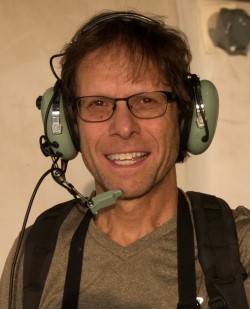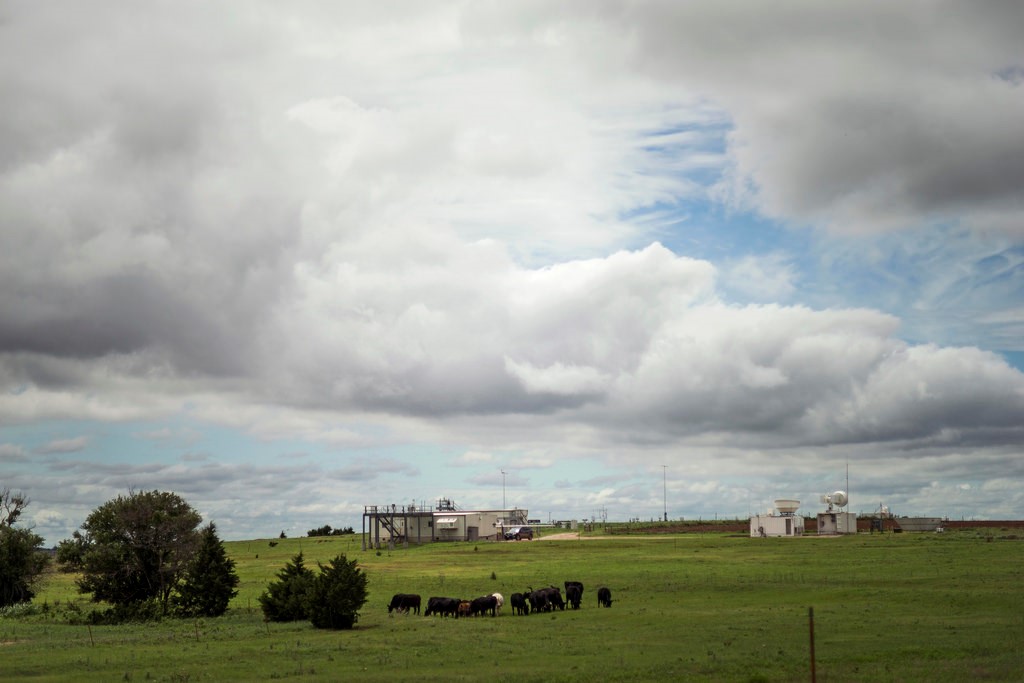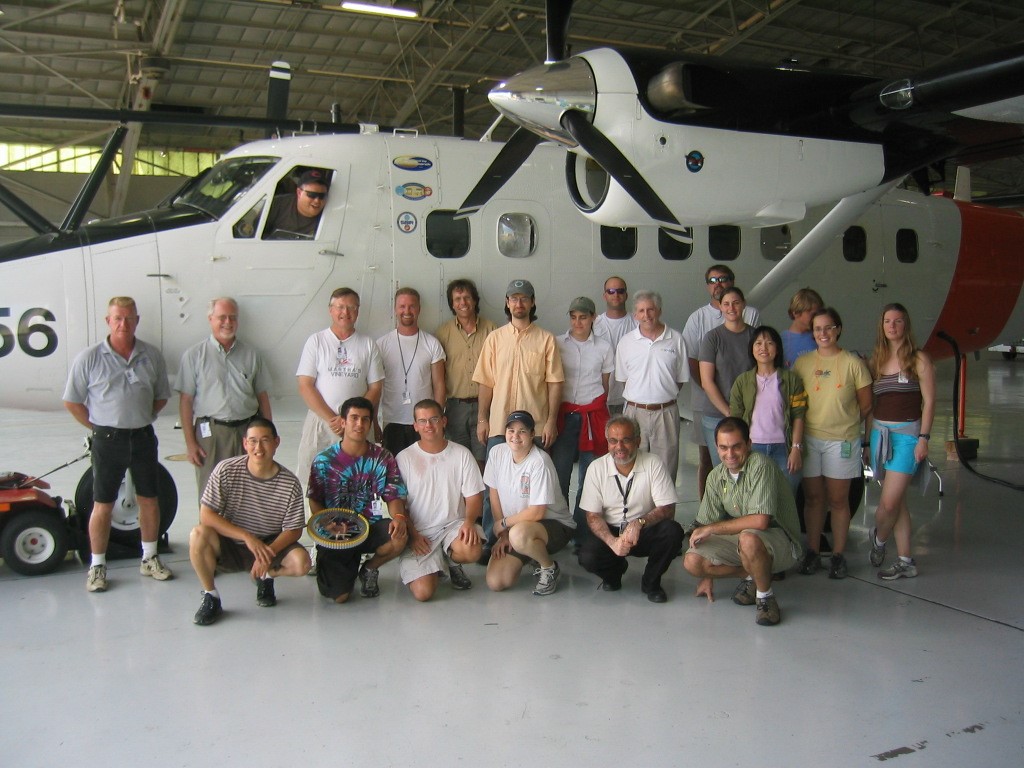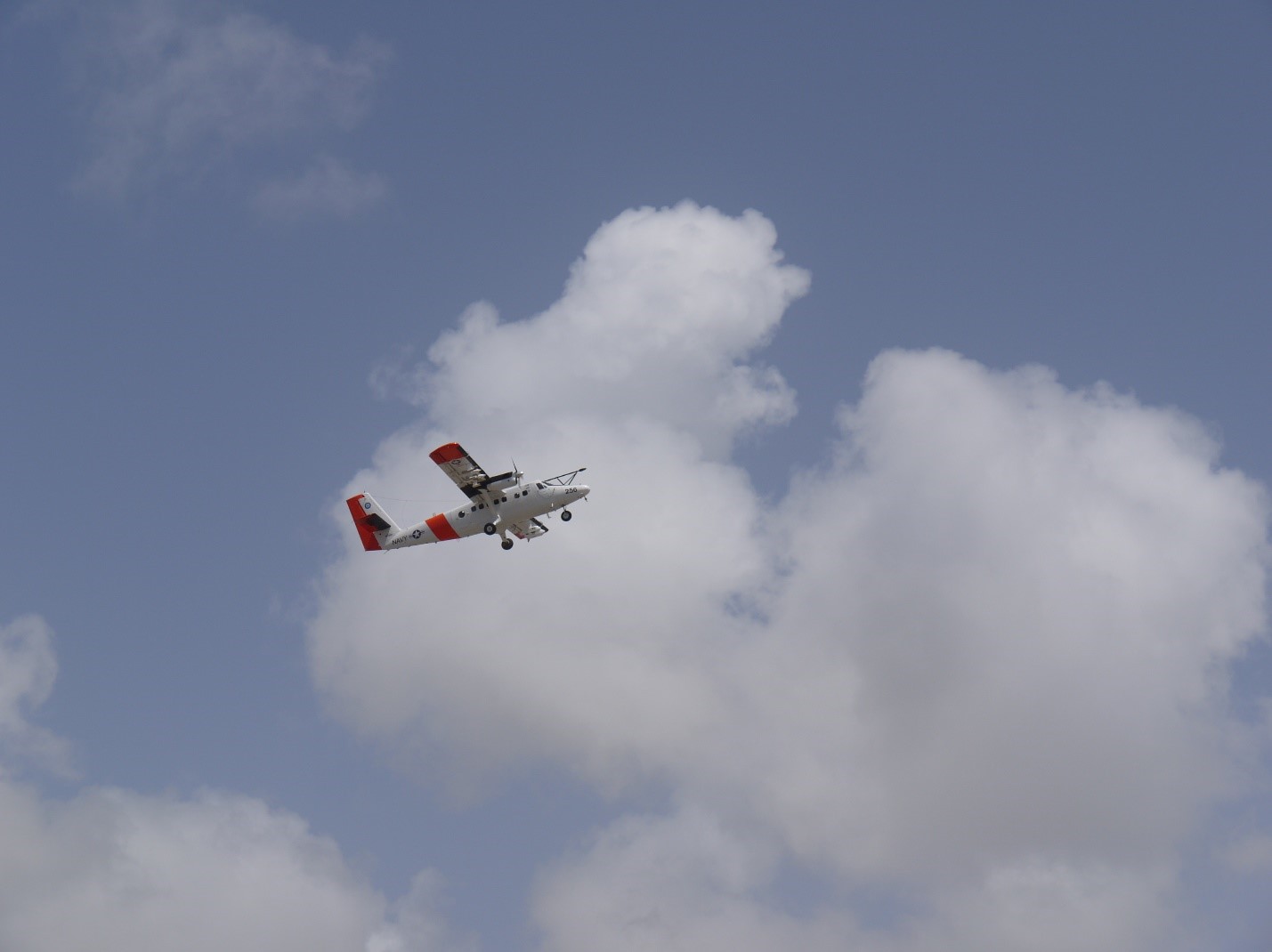UEC Profile: Graham Feingold Prefers ‘Science Right in Front of Your Eyes’
Published: 20 May 2018
The National Oceanic and Atmospheric Administration scientist and his team investigate cloud behaviors with a dynamical systems perspective
This is the fifth article in a series of profiles on members of the ARM User Executive Committee (UEC).

For a while as a master’s degree student at Tel Aviv University, Graham Feingold ran outside when it rained and raced to his car. Fifty kilometers away, on a remote hillside, was his mobile lab for measuring raindrops.
“Every time I arrived,” he remembers, “the first lightning strikes had shut the instrument down. I was always struggling for data.”
The experience also temporarily shut down the South Africa native’s foray into being an observationalist. During his PhD work at Tel Aviv, Feingold turned to modeling raindrops, entering at the same time into the world of cloud microphysics.
Feingold is now a widely published research scientist at the Earth System Research Laboratory, an arm of the National Oceanic and Atmospheric Administration (NOAA) in Boulder, Colorado, where he is science lead for modeling in the cloud and aerosols processes group.
He uses high-resolution models in conjunction with observational data to investigate aerosol-cloud-precipitation interactions; how they work at both a microphysical and system-wide, cloud-scale level; how lidar and radar remote-sensing technologies can help; and what the implications of cloud and aerosol processes are for predictive earth system models.
Microphysics, Models, and More
Today, the kind of data Feingold once ran out into the rain to get comes directly to his computer screen. Most often, the source is the Atmospheric Radiation Measurement (ARM) Climate Research Facility. It’s been part of the U.S. Department of Energy (DOE) for more than 25 years. It has both fixed and mobile observatories that continuously reel in domestic and international data.
Feingold says of his group, “Our main goal is an understanding of how the cloudy boundary layer works, how aerosol particles affect the cloudy boundary layer, and how this might change in a warmer climate.”
It is brain-popping work, in part because it joins two complex, mutable, interactive physical phenomena—aerosols (tiny particles in the air) and clouds. Each one is dauntingly complex.
The first requires understanding many crisscrossing properties. To quote a recent Feingold paper, aerosols-related factors include “aerosol composition, optical properties, cloud condensation, ice nucleation potential, along with global distribution of these properties, controlled by emissions, transport, transformation, and sinks.”
As for clouds themselves, he writes, they are “complex, turbulent, microphysical entities and, by their very nature, ephemeral and hard to predict.”
A Team, Cloud Trials, and the LASSO Touch

Feingold’s team of postdocs and mid-career scientists concentrates on the boundary layer, the lowest few kilometers of the atmosphere where weather happens and precipitation forms. It is also where the complexity of land-cloud-aerosol interactions is not yet well represented in predictive earth system models.
Understanding the systems within the boundary layer requires considering a cloud field that might be 50 kilometers wide through measurements that capture phenomena in model grid boxes 10 meters across.
The team combines detailed large-eddy simulations (LES) of cloud-aerosol interactions with simpler models that are designed to unpack these interactions from a dynamical systems perspective.
“One cannot look at these parts in isolation,” says Feingold. “One has to understand the physics of the coupled system.”
Detailed LES simulations lead the team into the demanding territory of bin microphysics (here, the search for gradations in droplet size) and, with postdoc Fabian Hoffmann, “superdroplet” methods (a search for exact drop sizes, which makes calculations more accurate).
The dynamical systems perspective, on the other hand, has for one spurred Feingold’s collaboration with Ilan Koren at the Weizmann Institute of Science in Israel. They are studying a “predator-prey” cyclic relationship between clouds and rain. As precipitation falls, clouds empty then fill rapidly again—disturbing a population biology-like equilibrium that is reset once the predators (rain) are back in balance with the prey (clouds).
He calls this cyclic relationship between clouds and rain one of the “emergent phenomena” that could in the future directly inform models.
The search for a dynamical systems perspective has paired Feingold with his fellow NOAA group member Franziska Glassmeier in a joint study of network approaches to cloud systems. It has also brought him into collaboration with group member Ian Glenn. They are using input and output data from a new modeling project developed by ARM, the LES ARM Symbiotic and Simulation and Observation (LASSO) workflow.
Started in 2015 as a pilot project, LASSO has been operational since last summer and is just beginning to yield active experiments and a few published results. It is driven by measurements taken in the past few years at ARM’s Southern Great Plains atmospheric observatory.
“It is really important to test our models on a routine basis under a variety of atmospheric conditions,” says Feingold. “LASSO affords such an opportunity without a huge amount of effort on the part of the user.”
LASSO is the modeling project that Feingold considers his chief mission as a member of ARM’s User Executive Committee, which serves as a voice for the user community in interactions with ARM leadership.
He is a natural advocate, having been co-lead of the DOE Climate and Environmental Sciences Division ARM/Atmospheric System Research High-Resolution Modeling Workshop, which led to recommendations for the LASSO project.
Mountain Trails, CV Tales

Energetic and creative, Feingold’s group is also in pursuit of a fundamental understanding of boundary layer dynamics (led by Jan Kazil and Tak Yamaguchi). In addition, a team led by Yamaguchi is developing parameterizations that represent clouds in large-scale models.
All those tasks could fill a cloud-size whiteboard, and they are as cerebral as three-dimensional chess. It is no wonder that Feingold and some of his group go on lunchtime trail runs a few days a week.
“I’ve never been an athlete—I just work at it,” says Feingold. “I just plod away.”
“Plod” is a jarring word for Feingold, however, even in the realm of physical activity. On vacation, he “kayaks and hikes in remote parts of the world.”
And there was no plodding in the classroom either. Both his master’s and doctoral degrees (in 1985 and 1989) from Tel Aviv University came with summa cum laude honors.
Professionally, Feingold is busy with his team and with writing. (He has published more than 160 articles on subjects ranging from “cloud burning” to the multiphase chemistry of cloud-borne aerosols.)
He also has a list of obligations as long as a Colorado mountain trail. Among them: Feingold is co-editor of the European Geosciences Union open-access journal Atmospheric Chemistry and Physics, is a contributor to the Climate Change Science Program, and is on the Aerosol-Cloud-Precipitation-Climate steering committee.
Along the way, Feingold was a reviewer on the third and fourth iterations of the Intergovernmental Panel on Climate Change assessment reports and was among the lead authors on the fifth.
“Being a lead author was a very intellectually stimulating experience,” he says. “I was outside my smaller world of boundary layer clouds—just one part of this complex (earth) system.”
Photocopies, and a Kibbutz
All this passion for atmospheric science came in part from Feingold’s boyhood in Johannesburg, South Africa, where dramatic convective storms in summer raced across the dry terrain.
“I remember being pretty clear that I wanted to study something in the quantitative sciences,” says Feingold. “But what I liked about the atmospheric sciences was, here were physical phenomena. Science was right in front of your eyes.”
That passion goes back in part also to Glynis Bame, his high school physical geography teacher who supplemented the curriculum with challenging material photocopied from college texts.
Years later, says Feingold, “I contacted her and thanked her for setting me on the right track. It was a nice closing of a circle.”
The winter after high school, he spent two months on a kibbutz.
Being in Israel “completely changed my view of the world,” says Feingold, who grew up in the constraining shadow of apartheid. “It was a young and vibrant country.”
After one year of engineering studies at the University of the Witwatersrand in Johannesburg, he moved to Israel to study geophysics.
“I just decided to be practical,” says Feingold of his first two semesters in a program he was sure would yield a job. “About a year later, I decided to be impractical and follow my passion.”
The move involved more than a fascination with Earth’s processes.
Charisma, and Analyzing Rain

Tel Aviv University was attractive because of its status as the best place to study geophysics, but also because of atmospheric physicist Zev Levin, a professor there.
“It was Zev’s reputation, and his charisma, that captured me,” says Feingold. “I attribute him with putting me on the path to a successful career.”
It was also Levin who steered his young student away from acid rain investigations (the funding did not come through) into the science of improving quantitative precipitation measurements, in particular raindrop size distributions.
Feingold says, “It was an opportunity to learn analytical tools” that today are at the heart of his research.
After Tel Aviv came the powerful draw of Boulder, “the mecca for atmospheric sciences,” says Feingold. He moved there in 1990 to become a research assistant in the cloud physics laboratory at the Mesoscale and Microscale Meteorology Division of the National Center for Atmospheric Research (NCAR).
Feingold had visited the area in 1985 for a conference, while still in graduate school.
He says, “I was completely enamored” (and still is).
The ARM Climate Research Facility is a DOE Office of Science user facility. The ARM Facility is operated by nine DOE national laboratories.
Keep up with the Atmospheric Observer
Updates on ARM news, events, and opportunities delivered to your inbox
ARM User Profile
ARM welcomes users from all institutions and nations. A free ARM user account is needed to access ARM data.


















